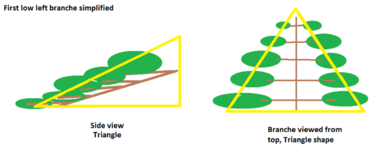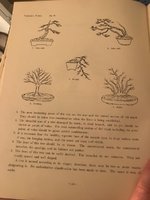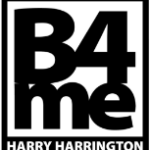Ugo
Shohin
Hi everyone!
I decided to begin my bonsai journey about a year ago, my main focus this year was to make all my big collection of 4 pre-bonsai trees survive , help the trees get in better health, and do some basic work myself towards the simple designs I imagine.
I started from zero and I didn't want to spend time looking at all the different bonsai rules while my trees are dying due to lack of basic horticultural knowledge.
It was fun and judging by the results I can say Mission accomplish for now so its time to go a little bit deeper in the subject of styling.
I looked at pictures of the different styles seen trees in person, worked a little bit on my trees and I've learned that once you have a clear idea of the 'final' style of a tree you can work towards that goal more specifically.
Seeing the tree in the future is important.
One thing I have learned is that there's is key points that influence the choice of style of a specific tree, major work aside, basic characteristics of the tree will be taken in consideration before choosing a style (Thanks captain obvious)
I hope I'm not confused here but one thing I observed that sometimes remain similar regardless the style of a chosen species it is the secondary/tertiary branches placement giving pads formation.
For example a cascade styled juniper can have pretty much the same secondary, tertiary branching as another juniper styled as an informal upright.
I don't have the chance often to see advanced bonsai specimen in person but when I do I take my time to look at different angles and at the "styles" of the pads if I can say it that way, the shape either viewed from the top or the sides given by the placement of the secondary and tertiary branches.
They pads always have basic profiles like a triangle, a diamond a water droplet.
Can you help me get the guidelines on how secondary and tertiary branches should be "normally" placed to create a specific pad shape?
How many time or form of pad shape are commonly used? I described 3 (is there a name for theses forms in bonsai?) but I'm sure there more.
Is there guidelines that will influence the artist choice for specific shape, what normally dictate the choice pad form?
Search doesn't seems to be my friend or maybe I don't express myself correctly?
A more visual example will be theses 2 pictures:
They are different styles, two different artists , a deciduous and a conifer but when one is not in leaf's and the other has been pruned I could take the branches of one and place it on the other without a major clash in the overall look, they have the same structure from side view.
The tertiary ramification is shorter on the juniper but the "overall" shape especially the lowest branches are similar


Thanks for your help
Ugo
I decided to begin my bonsai journey about a year ago, my main focus this year was to make all my big collection of 4 pre-bonsai trees survive , help the trees get in better health, and do some basic work myself towards the simple designs I imagine.
I started from zero and I didn't want to spend time looking at all the different bonsai rules while my trees are dying due to lack of basic horticultural knowledge.
It was fun and judging by the results I can say Mission accomplish for now so its time to go a little bit deeper in the subject of styling.
I looked at pictures of the different styles seen trees in person, worked a little bit on my trees and I've learned that once you have a clear idea of the 'final' style of a tree you can work towards that goal more specifically.
Seeing the tree in the future is important.
One thing I have learned is that there's is key points that influence the choice of style of a specific tree, major work aside, basic characteristics of the tree will be taken in consideration before choosing a style (Thanks captain obvious)
I hope I'm not confused here but one thing I observed that sometimes remain similar regardless the style of a chosen species it is the secondary/tertiary branches placement giving pads formation.
For example a cascade styled juniper can have pretty much the same secondary, tertiary branching as another juniper styled as an informal upright.
I don't have the chance often to see advanced bonsai specimen in person but when I do I take my time to look at different angles and at the "styles" of the pads if I can say it that way, the shape either viewed from the top or the sides given by the placement of the secondary and tertiary branches.
They pads always have basic profiles like a triangle, a diamond a water droplet.
Can you help me get the guidelines on how secondary and tertiary branches should be "normally" placed to create a specific pad shape?
How many time or form of pad shape are commonly used? I described 3 (is there a name for theses forms in bonsai?) but I'm sure there more.
Is there guidelines that will influence the artist choice for specific shape, what normally dictate the choice pad form?
Search doesn't seems to be my friend or maybe I don't express myself correctly?
A more visual example will be theses 2 pictures:
They are different styles, two different artists , a deciduous and a conifer but when one is not in leaf's and the other has been pruned I could take the branches of one and place it on the other without a major clash in the overall look, they have the same structure from side view.
The tertiary ramification is shorter on the juniper but the "overall" shape especially the lowest branches are similar


Thanks for your help
Ugo


